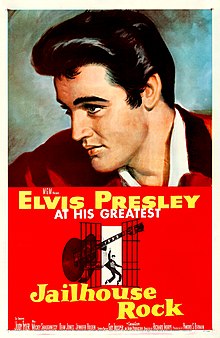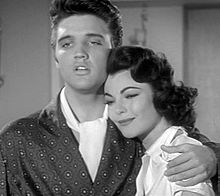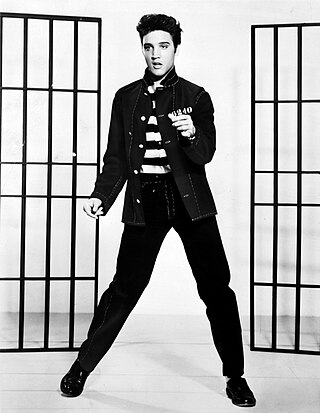
Elvis Aaron Presley, also known mononymously as Elvis, was an American singer and actor. Known as the "King of Rock and Roll", he is regarded as one of the most significant cultural figures of the 20th century. Presley's energized interpretations of songs and sexually provocative performance style, combined with a singularly potent mix of influences across color lines during a transformative era in race relations, brought both great success and initial controversy.
Peter Guralnick is an American music critic, author, and screenwriter. He specializes in the history of early rock and roll and has written books on Elvis Presley, Sam Phillips, and Sam Cooke.

Winfield Scott Moore III was an American guitarist who formed The Blue Moon Boys in 1954, Elvis Presley's backing band. He was studio and touring guitarist for Presley between 1954 and 1968.
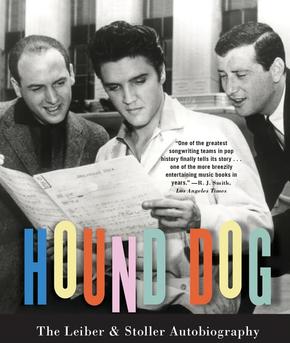
Leiber and Stoller were an American Grammy award-winning songwriting and record production duo, consisting of lyricist Jerry Leiber and composer Mike Stoller. As well as many R&B and pop hits, they wrote numerous standards for Broadway.

"Hound Dog" is a twelve-bar blues song written by Jerry Leiber and Mike Stoller. Recorded originally by Big Mama Thornton on August 13, 1952, in Los Angeles and released by Peacock Records in late February 1953, "Hound Dog" was Thornton's only hit record, selling over 500,000 copies, spending 14 weeks in the R&B charts, including seven weeks at number one. Thornton's recording of "Hound Dog" is listed as one of the Rock and Roll Hall of Fame's "500 Songs That Shaped Rock and Roll", ranked at 318 in the 2021 iteration of Rolling Stone's 500 Greatest Songs of All Time and was inducted into the Grammy Hall of Fame in February 2013.

"Jailhouse Rock" is a rock and roll song recorded by American singer Elvis Presley for the film of the same name. It was written by Jerry Leiber and Mike Stoller. RCA Victor released the song on a 45 rpm single on September 24, 1957, as the first single from the film's soundtrack EP. It reached the top of the charts in the U.S. and the top 10 in several other countries. The song has been recognized by the Grammy Hall of Fame, the American Film Institute, and others.

Elvis Presley was an American entertainer who achieved great initial success as a singer and stage performer. He publicly expressed an early career goal of following in the footsteps of his role models James Dean and Marlon Brando to become a top dramatic actor. His manager Colonel Tom Parker's persistent lobbying of William Morris Agency president Abe Lastfogel for a Presley screen test paid off on March 26, 1956, when the singer auditioned at Paramount for a supporting role in The Rainmaker. Although not chosen for the part, he signed a contract with Paramount producer Hal Wallis on April 25 that also allowed him to make films with other studios.

Loving You is a 1957 American musical drama film directed by Hal Kanter and starring Elvis Presley, Lizabeth Scott, and Wendell Corey. The film was Presley's first major starring role, following his debut in a supporting role in the 1956 film Love Me Tender. The film follows a delivery man who is discovered by a music publicist and a country–western musician who wants to promote the talented newcomer.

Blues for Elvis – King Does the King's Things is the fifth studio album by Albert King. The songs in the album are versions of songs previously recorded by Elvis Presley. On the album sleeve there is a review by Albert Goldman, music critic for Life, who says, among other things: "For the first time on record, the King of Blues is meeting the King of Rock ... you're gonna love every minute of this musical feast fit for kings."
Freddy Bienstock was an American music publisher who built his career in music by being the person responsible for soliciting and selecting songs for Elvis Presley's early albums and films.
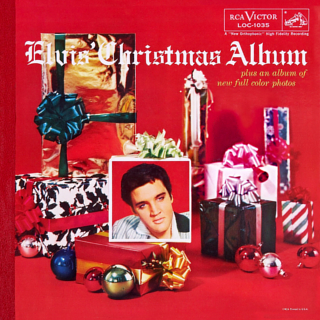
Elvis' Christmas Album is the third studio album and first Christmas album by American singer and musician Elvis Presley on RCA Victor, LOC -1035, a deluxe limited edition, released October 15, 1957, and recorded at Radio Recorders in Hollywood. It has been reissued in numerous different formats since its first release. It spent four weeks at No. 1 on the Billboard Top Pop Albums chart, and was the first of two Christmas-themed albums Presley would record, the other being Elvis Sings the Wonderful World of Christmas, released in 1971. The publication Music Vendor listed Elvis' Christmas Album on their singles charts for two weeks in December 1957 – January 1958, with a peak position of No. 49.

Elvis Is Back! is the fourth studio album by American singer Elvis Presley, released on April 8, 1960 by RCA Victor. It was Presley's first album of new material since 1958's King Creole soundtrack, as well as his first to be recorded and released in stereophonic sound. The album marked Presley's return to music after his discharge from the U.S. Army.

The King of Rock 'n' Roll: The Complete 50's Masters is a five-disc box set compilation of the complete known studio master recordings by American singer and musician Elvis Presley during the decade of the 1950s. Issued in 1992 by RCA Records, catalog number 66050-2, it was soon followed by similar box sets covering Presley's musical output in the 1960s and 1970s. This set's initial long-box release included a set of collectible stamps duplicating the record jackets from every Presley LP on RCA Victor, every single that had a picture sleeve, and most of his EP releases. The set includes a booklet with an extensive session list and discography, and a lengthy essay by Peter Guralnick. It peaked at #159 on the album chart and was certified a gold record on August 7, 1992, by the RIAA. Further certifications were for platinum on November 20, 1992, and for double platinum on July 30, 2002.
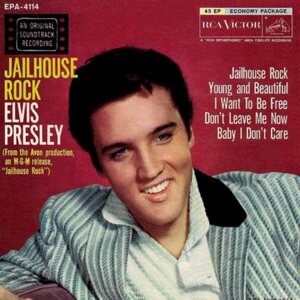
Jailhouse Rock is an EP by American singer Elvis Presley, featuring songs from the movie of the same name. It was released by RCA Victor, with catalogue EPA 4114, on October 30, 1957. Recording sessions took place at Radio Recorders in Hollywood on April 30 and May 3, 1957, with an additional session at the Metro-Goldwyn-Mayer Soundstage in Hollywood on May 9 for "Don't Leave Me Now". It peaked at #1 on the newly inaugurated Billboard EP chart where it remained at #1 for 28 weeks. The EP album was the best selling EP album of 1958 according to Billboard.
"Trouble" is a blues song written by Jerry Leiber and Mike Stoller, originally performed by Elvis Presley in 1958 and covered by a number of artists in later years.

King Creole is the second soundtrack album by American singer and musician Elvis Presley, issued by RCA Victor, LPM 1884 in mono in September 1958, recorded in four days at Radio Recorders in Hollywood. It contains songs written and recorded expressly for the 1958 film of the same name starring Presley, and peaked at No. 2 on the Billboard Top Pop Albums chart. The album was previously released as an EP album with two volumes, King Creole Vol 1 and King Creole Vol 2. King Creole Vol 1 peaked at #1 for 30 weeks on the EP album charts. It followed the film's release by over ten weeks. It was certified Gold on July 15, 1999, by the Recording Industry Association of America.

"Santa Claus Is Back in Town" is a Christmas song written in 1957 by Jerry Leiber and Mike Stoller, and first recorded that year by Elvis Presley as the opening track on Elvis' Christmas Album, the best-selling Christmas/holiday album of all time in the United States. The song has become a rock and roll Christmas standard.
"Girls Girls Girls", or "Girls! Girls! Girls!", is a song written and produced by Jerry Leiber and Mike Stoller.
"I Want to Be Free" is a song first recorded by Elvis Presley as part of the soundtrack for his 1957 motion picture Jailhouse Rock. Its first release on record was on the soundtrack EP Jailhouse Rock in 1957.

Elvis Aaron Presley, popularly known by his first name Elvis, was an American singer and actor. He was born in Tupelo, Mississippi and relocated to Memphis, Tennessee with his family at age 13. His music career began there in 1954, recording at Sun Records with producer Sam Phillips, who wanted to bring the sound of African-American music to a wider audience. Presley, on rhythm acoustic guitar, and accompanied by lead guitarist Scotty Moore and bassist Bill Black, was a pioneer of rockabilly, an uptempo, backbeat-driven fusion of country music and rhythm and blues. In 1955, drummer D. J. Fontana joined to complete the lineup of Presley's classic quartet and RCA Victor acquired his contract in a deal arranged by Colonel Tom Parker, who would manage him for more than two decades.
